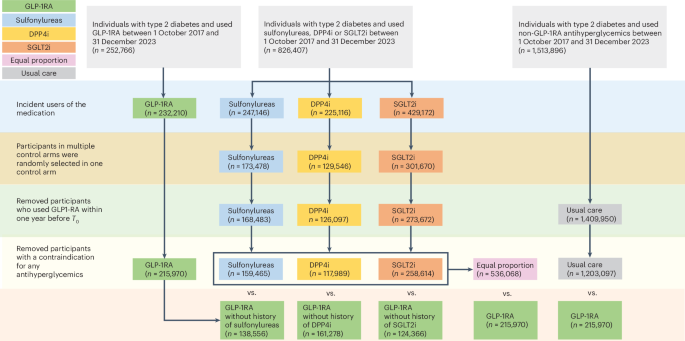Your cart is currently empty!
Tag: Effectiveness

The Impact of Proactive Maintenance on Overall Equipment Effectiveness (OEE)
Proactive maintenance is a strategy that focuses on preventing equipment breakdowns and ensuring optimal performance through regular inspections, servicing, and repairs. This approach to maintenance not only minimizes downtime and repairs costs but also has a significant impact on Overall Equipment Effectiveness (OEE).OEE is a key performance indicator that measures the efficiency of a manufacturing process by taking into account three factors: availability, performance, and quality. By improving these three aspects, companies can increase their OEE score and ultimately boost their productivity and profitability.
Proactive maintenance plays a crucial role in improving OEE by addressing the root causes of equipment failures before they lead to costly breakdowns. By conducting regular inspections and preventive maintenance tasks, maintenance teams can identify potential issues early on and take corrective actions to prevent equipment failures.
In addition, proactive maintenance helps to improve the availability factor of OEE by reducing unplanned downtime. By identifying and addressing potential issues before they cause a breakdown, companies can ensure that their equipment is running smoothly and efficiently, maximizing their production output.
Furthermore, proactive maintenance can also have a positive impact on the performance factor of OEE. By keeping equipment in optimal condition through regular servicing and adjustments, companies can improve the overall speed and efficiency of their production processes.
Finally, proactive maintenance can also contribute to the quality factor of OEE by ensuring that equipment is operating at its best and producing high-quality products. By maintaining equipment in good condition, companies can reduce the risk of defects and rework, ultimately improving the overall quality of their products.
In conclusion, proactive maintenance is a critical strategy for improving Overall Equipment Effectiveness (OEE) in manufacturing operations. By preventing equipment breakdowns, minimizing downtime, and ensuring optimal performance, companies can increase their OEE score and achieve higher levels of productivity and profitability. Investing in proactive maintenance is not only a cost-effective approach to maintenance but also a key driver of operational excellence in today’s competitive manufacturing landscape.

How Proactive Maintenance Can Improve Overall Equipment Effectiveness
Proactive maintenance is a crucial aspect of ensuring the smooth operation of equipment in various industries. It involves regularly monitoring and servicing equipment to prevent potential breakdowns and maximize overall equipment effectiveness (OEE). By implementing proactive maintenance strategies, businesses can improve productivity, reduce downtime, and extend the lifespan of their equipment.One of the key benefits of proactive maintenance is that it helps to identify and address potential issues before they escalate into larger problems. By conducting regular inspections and maintenance tasks, such as lubrication, cleaning, and calibration, technicians can identify signs of wear and tear and take corrective action to prevent equipment failure. This proactive approach can help businesses avoid unexpected downtime, costly repairs, and disruptions to their operations.
Proactive maintenance also plays a significant role in improving OEE, which is a measure of how efficiently equipment is being utilized. By implementing proactive maintenance strategies, businesses can increase equipment availability, reduce unplanned downtime, and improve overall equipment reliability. This can ultimately lead to higher productivity, increased output, and improved profitability.
Additionally, proactive maintenance can help to extend the lifespan of equipment by ensuring that it is properly maintained and serviced on a regular basis. By performing preventive maintenance tasks, businesses can reduce the risk of premature equipment failure and avoid the need for costly replacements. This can help to maximize the return on investment in equipment and reduce the total cost of ownership over time.
In order to effectively implement proactive maintenance strategies, businesses should establish a comprehensive maintenance plan that includes regular inspections, scheduled maintenance tasks, and proactive monitoring of equipment performance. This plan should be tailored to the specific needs and requirements of each piece of equipment, taking into account factors such as operating conditions, usage patterns, and manufacturer recommendations.
By prioritizing proactive maintenance and investing in the necessary resources and training, businesses can improve OEE, reduce downtime, and increase the overall reliability and performance of their equipment. Ultimately, proactive maintenance is a critical component of a successful maintenance strategy that can help businesses achieve their operational and financial goals.

Maximizing the Effectiveness of Your Service Level Agreements
Service Level Agreements (SLAs) are essential for businesses to ensure that their service providers deliver the agreed-upon level of service. However, many organizations struggle to maximize the effectiveness of their SLAs. In this article, we will discuss some key strategies for maximizing the effectiveness of your SLAs.1. Clearly Define Expectations: One of the most critical aspects of an SLA is clearly defining the expectations of both parties. This includes outlining the specific services that will be provided, the performance metrics that will be used to measure the service provider’s performance, and the consequences for failing to meet the agreed-upon standards. By clearly defining expectations from the outset, both parties can ensure that they are on the same page and can hold each other accountable.
2. Establish Realistic Performance Metrics: When creating an SLA, it is essential to establish realistic performance metrics that accurately reflect the level of service that is expected. Setting unrealistic performance metrics can lead to frustration and dissatisfaction on both sides, as the service provider may struggle to meet the standards, and the customer may feel that they are not receiving the service they were promised. By setting realistic performance metrics, both parties can work towards achievable goals and track progress effectively.
3. Monitor Performance Regularly: Monitoring the performance of your service provider is crucial for ensuring that they are meeting the agreed-upon standards. Regularly reviewing performance metrics and comparing them against the targets outlined in the SLA can help identify any areas where the service provider may be falling short and allow for timely intervention to address any issues. By monitoring performance regularly, you can ensure that the service provider is delivering the level of service that you expect.
4. Communicate Effectively: Effective communication is key to maximizing the effectiveness of your SLAs. Both parties should be in regular contact to discuss performance, address any issues that may arise, and make any necessary adjustments to the SLA as needed. By maintaining open lines of communication, you can build a strong relationship with your service provider and ensure that they are meeting your expectations.
5. Review and Update SLAs as Needed: As your business evolves and changes, it is essential to review and update your SLAs to ensure that they continue to reflect your current needs and expectations. Regularly reviewing and updating your SLAs can help ensure that they remain relevant and effective in helping you achieve your business goals.
In conclusion, maximizing the effectiveness of your SLAs requires clear communication, realistic performance metrics, regular monitoring, and ongoing review and updates. By following these key strategies, you can ensure that your SLAs are effective in helping you achieve the level of service that you expect from your service providers.

Maximizing Efficiency and Effectiveness in Technical Support
Technical support is an essential function for any company that relies on technology to operate efficiently. Whether it’s troubleshooting software issues, resolving hardware problems, or providing guidance on how to use a particular system, technical support plays a crucial role in ensuring that employees can perform their jobs effectively.In order to maximize efficiency and effectiveness in technical support, companies must implement strategies and best practices that streamline the support process and deliver optimal results. Here are some key tips for achieving this goal:
1. Implement a ticketing system: A ticketing system is a centralized platform that allows support teams to track, prioritize, and resolve customer issues in a systematic manner. By using a ticketing system, technical support teams can ensure that no request falls through the cracks, and that issues are resolved in a timely manner.
2. Provide comprehensive training: Technical support agents should be well-trained in the products and services they support, as well as in troubleshooting techniques and customer service skills. By investing in comprehensive training programs, companies can ensure that their support teams are equipped to handle a wide range of issues effectively.
3. Leverage automation: Automation can help streamline repetitive tasks and free up support agents to focus on more complex issues. By implementing automation tools, companies can reduce response times, increase productivity, and improve overall customer satisfaction.
4. Foster collaboration: Collaboration is key to maximizing efficiency in technical support. By fostering a culture of teamwork and communication, support teams can share knowledge, brainstorm solutions, and work together to resolve issues more effectively.
5. Monitor performance metrics: Monitoring key performance metrics, such as response times, resolution rates, and customer satisfaction scores, can help companies identify areas for improvement and track the success of their support efforts. By regularly analyzing these metrics, companies can make data-driven decisions to optimize their support processes.
6. Provide self-service options: Empowering customers to troubleshoot common issues on their own through self-service options, such as knowledge bases and FAQs, can help reduce the volume of support requests and free up support agents to focus on more complex issues.
By implementing these strategies and best practices, companies can maximize efficiency and effectiveness in their technical support operations, ultimately improving customer satisfaction and driving business success.

The Impact of Proactive Maintenance on Overall Equipment Effectiveness
Proactive maintenance is a crucial strategy that can have a significant impact on overall equipment effectiveness (OEE) in manufacturing facilities. OEE is a measure of how well a manufacturing process is performing in terms of availability, performance, and quality. By implementing proactive maintenance practices, companies can improve OEE and ultimately increase production efficiency and profitability.One of the key benefits of proactive maintenance is that it helps prevent unexpected equipment failures. By regularly inspecting and maintaining equipment, companies can identify and address potential issues before they lead to costly breakdowns. This not only reduces downtime and the associated production losses but also extends the lifespan of equipment, leading to lower maintenance costs in the long run.
Proactive maintenance also helps improve equipment performance. Regular maintenance activities such as lubrication, calibration, and alignment can help ensure that equipment is operating at peak efficiency. This can lead to higher production speeds, reduced cycle times, and improved overall performance, ultimately boosting OEE.
In addition, proactive maintenance can have a positive impact on product quality. Equipment that is well-maintained is less likely to produce defective products, leading to fewer defects and rework. This can help companies meet quality standards, reduce waste, and improve customer satisfaction.
Furthermore, proactive maintenance can contribute to a safer work environment. Well-maintained equipment is less likely to malfunction or cause accidents, reducing the risk of injury to employees and damage to the facility. This can lead to improved employee morale, reduced absenteeism, and lower insurance costs.
Overall, proactive maintenance plays a critical role in improving OEE and driving operational excellence in manufacturing facilities. By investing in proactive maintenance practices, companies can enhance equipment reliability, performance, and quality, leading to increased productivity, reduced costs, and greater competitiveness in the market. It is essential for companies to prioritize proactive maintenance as a key component of their overall maintenance strategy to maximize OEE and achieve long-term success.

Improving Your Technical Support Team’s Efficiency and Effectiveness
Having a strong and efficient technical support team is essential for any organization that relies on technology to operate. A well-functioning support team can help resolve technical issues quickly and effectively, minimizing downtime and keeping operations running smoothly. However, even the most talented and experienced support team can benefit from strategies to improve their efficiency and effectiveness. Here are some tips for enhancing your technical support team’s performance:1. Invest in training and professional development: Providing ongoing training and development opportunities for your support team members can help them stay up-to-date on the latest technologies and best practices. This can improve their problem-solving skills and make them more effective at resolving technical issues. Encourage team members to pursue certifications and attend industry conferences to expand their knowledge and skills.
2. Implement a knowledge base: Creating a centralized knowledge base can help your support team access important information quickly and easily. This can include troubleshooting guides, FAQs, and other resources that can help team members resolve common technical issues without having to reinvent the wheel. A knowledge base can also help new team members get up to speed more quickly and provide consistent support to customers.
3. Use ticketing systems: Implementing a ticketing system can help your support team track and prioritize technical issues more efficiently. This can help ensure that no issues fall through the cracks and that team members are able to respond to requests in a timely manner. Ticketing systems can also provide valuable data on response times, resolution rates, and customer satisfaction, allowing you to identify areas for improvement.
4. Foster a collaborative team environment: Encouraging collaboration and communication among team members can help improve efficiency and effectiveness. Create opportunities for team members to share knowledge and expertise, such as regular team meetings or brainstorming sessions. Encourage team members to work together to solve complex technical issues and support each other when facing challenges.
5. Monitor performance and provide feedback: Regularly monitoring your support team’s performance can help you identify areas for improvement and provide feedback to team members. Use metrics such as response times, resolution rates, and customer satisfaction scores to evaluate performance. Provide constructive feedback to team members to help them address any weaknesses and continue to grow and develop their skills.
By implementing these strategies, you can help improve your technical support team’s efficiency and effectiveness, ultimately leading to better customer satisfaction and smoother operations for your organization. Investing in your support team’s training and development, implementing tools such as a knowledge base and ticketing system, fostering a collaborative team environment, and monitoring performance can all contribute to a more successful and productive support team.

Tips for Improving the Efficiency and Effectiveness of Your Technical Support Team
In today’s fast-paced and technology-driven world, having a reliable and efficient technical support team is essential for any business. Whether you are a small startup or a large corporation, your technical support team plays a crucial role in ensuring that your customers have a positive experience with your products or services. Here are some tips for improving the efficiency and effectiveness of your technical support team:1. Invest in training: One of the most important factors in improving the effectiveness of your technical support team is to invest in training. Make sure that your team members are knowledgeable about your products or services and have the necessary technical skills to assist customers effectively. Provide ongoing training and development opportunities to keep your team up-to-date with the latest technologies and best practices.
2. Implement a ticketing system: A ticketing system can help streamline the support process by organizing and prioritizing customer inquiries. This allows your team to track and manage customer issues more efficiently, ensuring that no request goes unanswered. Choose a ticketing system that is user-friendly and integrates well with your existing tools and systems.
3. Set clear goals and expectations: Clearly define the roles and responsibilities of each team member and establish key performance indicators (KPIs) to measure their performance. Setting clear goals and expectations helps keep your team focused and motivated, leading to improved efficiency and customer satisfaction.
4. Encourage collaboration and teamwork: Foster a collaborative environment within your technical support team by encouraging team members to share knowledge and expertise. This can help increase efficiency by allowing team members to learn from each other and solve problems more effectively. Consider implementing team-building activities and regular team meetings to promote communication and collaboration.
5. Provide the right tools and resources: Equip your technical support team with the right tools and resources to perform their jobs effectively. This may include software applications for tracking customer inquiries, remote access tools for troubleshooting issues, and knowledge bases for quick reference. Investing in the right tools can help streamline the support process and improve productivity.
6. Gather feedback from customers: Customer feedback is invaluable in improving the effectiveness of your technical support team. Encourage customers to provide feedback on their support experience, whether through surveys, online reviews, or direct communication. Use this feedback to identify areas for improvement and make necessary adjustments to enhance the quality of your support services.
7. Monitor and analyze performance data: Regularly monitor and analyze performance data to identify trends and areas for improvement. Track key metrics such as response times, resolution rates, and customer satisfaction scores to assess the effectiveness of your technical support team. Use this data to make data-driven decisions and implement strategies to improve efficiency and customer satisfaction.
By implementing these tips, you can improve the efficiency and effectiveness of your technical support team, leading to better customer satisfaction and loyalty. Remember that a well-trained and motivated technical support team is a valuable asset to your business and can help drive success in today’s competitive market.

Key Metrics to Measure the Effectiveness of Your Proactive Maintenance Program
Implementing a proactive maintenance program is essential for ensuring the longevity and efficiency of equipment and machinery in any facility. By regularly inspecting, monitoring, and maintaining assets before they break down, businesses can avoid costly repairs, downtime, and safety hazards. However, to truly gauge the effectiveness of your proactive maintenance program, it is crucial to measure key metrics that indicate its success.One of the most important metrics to track is overall equipment effectiveness (OEE). OEE is a measure of how well equipment is performing relative to its maximum potential. It takes into account three factors: availability (the percentage of time the equipment is running), performance (the speed at which the equipment is operating), and quality (the percentage of good products produced by the equipment). By calculating OEE regularly, maintenance teams can identify areas for improvement and track the impact of proactive maintenance efforts on equipment performance.
Another key metric to measure is mean time between failures (MTBF). MTBF is the average time that a piece of equipment operates before experiencing a failure. By tracking MTBF, maintenance teams can assess the reliability of equipment and identify trends that may indicate the need for additional maintenance or replacement. A decreasing MTBF could signal that proactive maintenance efforts are not sufficient and adjustments need to be made to prevent more frequent breakdowns.
Similarly, mean time to repair (MTTR) is another important metric to consider. MTTR measures the average time it takes to repair equipment after a breakdown occurs. A lower MTTR indicates that maintenance teams are responding quickly and efficiently to equipment failures, minimizing downtime and production losses. By tracking MTTR, businesses can evaluate the effectiveness of their maintenance processes and identify opportunities for improvement.
Additionally, tracking maintenance costs is essential for evaluating the overall effectiveness of a proactive maintenance program. By comparing the cost of proactive maintenance activities to the cost of reactive maintenance (i.e., repairing equipment after it breaks down), businesses can determine if their preventive efforts are cost-effective. Lower maintenance costs and reduced downtime are key indicators of a successful proactive maintenance program.
In conclusion, measuring key metrics such as OEE, MTBF, MTTR, and maintenance costs is crucial for assessing the effectiveness of a proactive maintenance program. By monitoring these metrics regularly, businesses can identify areas for improvement, optimize maintenance schedules, and ensure the long-term reliability and performance of their equipment. Ultimately, a well-implemented proactive maintenance program can lead to increased efficiency, reduced downtime, and cost savings for businesses in the long run.

Improving Efficiency and Effectiveness in Technical Support Services
In today’s fast-paced business environment, technical support services play a crucial role in ensuring that systems and equipment are running smoothly. However, with the constantly evolving technology landscape, it can be challenging for technical support teams to keep up with the demands of their users. To improve efficiency and effectiveness in technical support services, organizations need to implement strategies that streamline processes and enhance customer satisfaction.One key aspect of improving technical support services is investing in the right tools and technologies. By utilizing advanced help desk software, ticketing systems, and remote monitoring tools, technical support teams can efficiently manage and prioritize incoming requests. These tools can also help automate repetitive tasks, freeing up technicians to focus on more complex issues.
Another important factor in improving technical support services is providing ongoing training and development for support staff. By staying up-to-date on the latest technologies and best practices, technicians can better troubleshoot issues and provide timely solutions to users. Regular training sessions and certifications can also help boost team morale and motivation.
In addition to investing in tools and training, organizations should also focus on enhancing communication and collaboration within the technical support team. By fostering a culture of teamwork and knowledge sharing, technicians can leverage each other’s expertise to quickly resolve issues. Implementing regular team meetings, sharing best practices, and creating a knowledge base can help improve response times and customer satisfaction.
Furthermore, organizations should monitor and analyze key performance metrics to assess the effectiveness of their technical support services. By tracking metrics such as average response time, resolution time, and customer satisfaction scores, organizations can identify areas for improvement and make data-driven decisions to enhance service delivery.
Ultimately, improving efficiency and effectiveness in technical support services requires a holistic approach that combines the right tools, training, communication, and performance monitoring. By implementing these strategies, organizations can ensure that their technical support teams are well-equipped to meet the demands of their users and deliver exceptional service.

Mapping the effectiveness and risks of GLP-1 receptor agonists
Pfeffer, M. A. et al. Lixisenatide in patients with type 2 diabetes and acute coronary syndrome. N. Engl. J. Med. 373, 2247–2257 (2015).
Marso, S. P. et al. Liraglutide and cardiovascular outcomes in type 2 diabetes. N. Engl. J. Med. 375, 311–322 (2016).
Marso, S. P. et al. Semaglutide and cardiovascular outcomes in patients with type 2 diabetes. N. Engl. J. Med. 375, 1834–1844 (2016).
Husain, M. et al. Oral semaglutide and cardiovascular outcomes in patients with type 2 diabetes. N. Engl. J. Med. 381, 841–851 (2019).
Holman, R. R. et al. Effects of once-weekly exenatide on cardiovascular outcomes in type 2 diabetes. N. Engl. J. Med. 377, 1228–1239 (2017).
Hernandez, A. F. et al. Albiglutide and cardiovascular outcomes in patients with type 2 diabetes and cardiovascular disease (Harmony Outcomes): a double-blind, randomised placebo-controlled trial. Lancet 392, 1519–1529 (2018).
Gerstein, H. C. et al. Dulaglutide and cardiovascular outcomes in type 2 diabetes (REWIND): a double-blind, randomised placebo-controlled trial. Lancet 394, 121–130 (2019).
Gerstein, H. C. et al. Cardiovascular and renal outcomes with efpeglenatide in type 2 diabetes. N. Engl. J. Med. 385, 896–907 (2021).
Perkovic, V. et al. Effects of semaglutide on chronic kidney disease in patients with type 2 diabetes. N. Engl. J. Med. 391, 109–121 (2024).
Kosiborod, M. N. et al. Semaglutide in patients with heart failure with preserved ejection fraction and obesity. N. Engl. J. Med. 389, 1069–1084 (2023).
Gerstein, H. C. et al. Dulaglutide and renal outcomes in type 2 diabetes: an exploratory analysis of the REWIND randomised, placebo-controlled trial. Lancet 394, 131–138 (2019).
Mann, J. F. E. et al. Liraglutide and renal outcomes in type 2 diabetes. N. Engl. J. Med. 377, 839–848 (2017).
Muskiet, M. H. A. et al. Lixisenatide and renal outcomes in patients with type 2 diabetes and acute coronary syndrome: an exploratory analysis of the ELIXA randomised, placebo-controlled trial. Lancet Diabetes Endocrinol. 6, 859–869 (2018).
Tuttle, K. R. et al. Dulaglutide versus insulin glargine in patients with type 2 diabetes and moderate-to-severe chronic kidney disease (AWARD-7): a multicentre, open-label, randomised trial. Lancet Diabetes Endocrinol. 6, 605–617 (2018).
Wilding, J. P. H. et al. Once-weekly semaglutide in adults with overweight or obesity. N. Engl. J. Med. 384, 989–1002 (2021).
Jastreboff, A. M. et al. Tirzepatide once weekly for the treatment of obesity. N. Engl. J. Med. 387, 205–216 (2022).
Kelly, A. S. et al. A randomized, controlled trial of liraglutide for adolescents with obesity. N. Engl. J. Med. 382, 2117–2128 (2020).
Wharton, S. et al. Daily oral GLP-1 receptor agonist orforglipron for adults with obesity. N. Engl. J. Med. 389, 877–888 (2023).
Watanabe, J. H., Kwon, J., Nan, B. & Reikes, A. Trends in glucagon-like peptide 1 receptor agonist use, 2014 to 2022. J. Am. Pharm. Assoc. 64, 133–138 (2024).
Hegland, T.A., Fang, Z. & Bucher, K. GLP-1 medication use for type 2 diabetes has soared.JAMA 332, 952–953 (2024).
Sodhi, M., Rezaeianzadeh, R., Kezouh, A. & Etminan, M. Risk of gastrointestinal adverse events associated with glucagon-like peptide-1 receptor agonists for weight loss. JAMA 330, 1795–1797 (2023).
Vidal, J., Flores, L., Jiménez, A., Pané, A. & de Hollanda, A. What is the evidence regarding the safety of new obesity pharmacotherapies. Int. J. Obes. https://doi.org/10.1038/s41366-024-01488-5 (2024).
Wang, W. et al. Association of semaglutide with risk of suicidal ideation in a real-world cohort. Nat. Med. 30, 168–176 (2024).
Laurindo, L. F. et al. GLP-1a: going beyond traditional use. Int. J. Mol. Sci. 23, 739 (2022).
Rubin, R. Could GLP-1 receptor agonists like semaglutide treat addiction, Alzheimer disease, and other conditions? JAMA 331, 1519–1521 (2024).
Wang, W. et al. Associations of semaglutide with incidence and recurrence of alcohol use disorder in real-world population. Nat. Commun. 15, 4548 (2024).
Wang, W. et al. Association of semaglutide with tobacco use disorder in patients with type 2 diabetes: target trial emulation using real-world data. Ann. Intern. Med. 177, 1016–1027 (2024).
Drucker, D. J. The benefits of GLP-1 drugs beyond obesity. Science 385, 258–260 (2024).
Lenharo, M. Why do obesity drugs seem to treat so many other ailments? Nature 633, 758–760 (2024).
Al-Aly, Z., Xie, Y. & Bowe, B. High-dimensional characterization of post-acute sequelae of COVID-19. Nature 594, 259–264 (2021).
Leggio, L. et al. GLP-1 receptor agonists are promising but unproven treatments for alcohol and substance use disorders. Nat. Med. 29, 2993–2995 (2023).
Wium-Andersen, I. K. et al. Use of GLP-1 receptor agonists and subsequent risk of alcohol-related events. A nationwide register-based cohort and self-controlled case series study. Basic Clin. Pharmacol. Toxicol. 131, 372–379 (2022).
Klausen, M. K. et al. Exenatide once weekly for alcohol use disorder investigated in a randomized, placebo-controlled clinical trial. JCI Insight 7, e159863 (2022).
Yammine, L., Balderas, J. C., Weaver, M. F. & Schmitz, J. M. Feasibility of exenatide, a GLP-1R agonist, for treating cocaine use disorder: a case series study. J. Addict. Med. 17, 481–484 (2023).
Angarita, G. A. et al. Testing the effects of the GLP-1 receptor agonist exenatide on cocaine self-administration and subjective responses in humans with cocaine use disorder. Drug Alcohol Depend. 221, 108614 (2021).
Dixit, T. S., Sharma, A. N., Lucot, J. B. & Elased, K. M. Antipsychotic-like effect of GLP-1 agonist liraglutide but not DPP-IV inhibitor sitagliptin in mouse model for psychosis. Physiol. Behav. 114−115, 38–41 (2013).
Gunturu, S. The potential role of GLP-1 agonists in psychiatric disorders: a paradigm shift in mental health treatment. Indian J. Psychol. Med. 46, 193–195 (2024).
López-Ojeda, W. & Hurley, R. A. Glucagon-like peptide 1: an introduction and possible implications for neuropsychiatry. J. Neuropsychiatry Clin. Neurosci. 36, A4–A86 (2024).
Flintoff, J., Kesby, J. P., Siskind, D. & Burne, T. H. J. Treating cognitive impairment in schizophrenia with GLP-1RAs: an overview of their therapeutic potential. Expert Opin. Investig. Drugs 30, 877–891 (2021).
European Medicines Agency. Meeting highlights from the Pharmacovigilance Risk Assessment Committee (PRAC) 8−11 April 2024. https://www.ema.europa.eu/en/news/meeting-highlights-pharmacovigilance-risk-assessment-committee-prac-8-11-april-2024 (12 April 2024).
Du, H., Meng, X., Yao, Y. & Xu, J. The mechanism and efficacy of GLP-1 receptor agonists in the treatment of Alzheimer’s disease. Front. Endocrinol. 13, 1033479 (2022).
Mehan, S. et al. Potential roles of glucagon-like peptide-1 and its analogues in dementia targeting impaired insulin secretion and neurodegeneration. Degener. Neurol. Neuromuscul. Dis. 12, 31–59 (2022).
Colin, I. M., Szczepanski, L. W., Gérard, A. C. & Elosegi, J. A. Emerging evidence for the use of antidiabetic drugs, glucagon-like peptide 1 receptor agonists, for the treatment of Alzheimer’s disease. touchREV. Endocrinol. 19, 16–24 (2023).
Lenharo, M. Obesity drugs have another superpower: taming inflammation. Nature 626, 246 (2024).
Nørgaard, C. H. et al. Treatment with glucagon-like peptide-1 receptor agonists and incidence of dementia: data from pooled double-blind randomized controlled trials and nationwide disease and prescription registers. Alzheimer’s Dement. 8, e12268 (2022).
De Giorgi, R. et al. 12-month neurological and psychiatric outcomes of semaglutide use for type 2 diabetes: a propensity-score matched cohort study. eClinicalMedicine 74, 102726 (2024).
Atri, A. et al. evoke and evoke+: design of two large-scale, double-blind, placebo-controlled, phase 3 studies evaluating the neuroprotective effects of semaglutide in early Alzheimer’s disease. Alzheimer’s Dement. 18, e062415 (2022).
Manavi, M. A. Neuroprotective effects of glucagon-like peptide-1 (GLP-1) analogues in epilepsy and associated comorbidities. Neuropeptides 94, 102250 (2022).
Wang, L. et al. Semaglutide attenuates seizure severity and ameliorates cognitive dysfunction by blocking the NLR family pyrin domain containing 3 inflammasome in pentylenetetrazole‑kindled mice. Int. J. Mol. Med. 48, 219 (2021).
Hussein, A. M. et al. Effects of GLP-1 receptor activation on a pentylenetetrazole−kindling rat model. Brain Sci. 9, 108 (2019).
Liu, S. et al. The glucagon-like peptide-1 analogue liraglutide reduces seizures susceptibility, cognition dysfunction and neuronal apoptosis in a mouse model of Dravet syndrome. Front. Pharmacol. 11, 136 (2020).
Sattar, N. et al. Cardiovascular, mortality, and kidney outcomes with GLP-1 receptor agonists in patients with type 2 diabetes: a systematic review and meta-analysis of randomised trials. Lancet Diabetes Endocrinol. 9, 653–662 (2021).
Jia, G., Aroor, A. R. & Sowers, J. R. Glucagon-like peptide 1 receptor activation and platelet function: beyond glycemic control. Diabetes 65, 1487–1489 (2016).
Drucker, D. J. The cardiovascular biology of glucagon-like peptide-1. Cell Metab. 24, 15–30 (2016).
Sternkopf, M. et al. Native, intact glucagon-like peptide 1 is a natural suppressor of thrombus growth under physiological flow conditions. Arter. Thromb. Vasc. Biol. 40, e65–e77 (2020).
Steven, S. et al. Glucagon-like peptide-1 receptor signalling reduces microvascular thrombosis, nitro-oxidative stress and platelet activation in endotoxaemic mice. Br. J. Pharmacol. 174, 1620–1632 (2017).
Cameron-Vendrig, A. et al. Glucagon-like peptide 1 receptor activation attenuates platelet aggregation and thrombosis. Diabetes 65, 1714–1723 (2016).
Zhang, Y., Chen, R., Jia, Y., Chen, M. & Shuai, Z. Effects of exenatide on coagulation and platelet aggregation in patients with type 2 diabetes. Drug Des. Devel. Ther. 15, 3027–3040 (2021).
Horvei, L. D., Brækkan, S. K. & Hansen, J. B. Weight change and risk of venous thromboembolism: the Tromsø study. PLoS ONE 11, e0168878 (2016).
de Lemos, J. A. et al. Tirzepatide reduces 24-hour ambulatory blood pressure in adults with body mass index ≥27 kg/m2: SURMOUNT-1 Ambulatory Blood Pressure Monitoring Substudy. Hypertension 81, e41–e43 (2024).
Goodwill, A. G. et al. Cardiovascular and hemodynamic effects of glucagon-like peptide-1. Rev. Endocr. Metab. Disord. 15, 209–217 (2014).
Ribeiro-Silva, J. C., Tavares, C. A. M. & Girardi, A. C. C. The blood pressure lowering effects of glucagon-like peptide-1 receptor agonists: a mini-review of the potential mechanisms. Curr. Opin. Pharmacol. 69, 102355 (2023).
Goud, A., Zhong, J., Peters, M., Brook, R. D. & Rajagopalan, S. GLP-1 agonists and blood pressure: a review of the evidence. Curr. Hypertens. Rep. 18, 16 (2016).
Yang, F. et al. GLP-1 receptor: a new target for sepsis. Front. Pharmacol. 12, 706908 (2021).
Helmstädter, J. et al. GLP-1 analog liraglutide improves vascular function in polymicrobial sepsis by reduction of oxidative stress and inflammation. Antioxidants 10, 1175 (2021).
Yi, H. et al. Activation of glucagon-like peptide-1 receptor in microglia exerts protective effects against sepsis-induced encephalopathy via attenuating endoplasmic reticulum stress-associated inflammation and apoptosis in a mouse model of sepsis. Exp. Neurol. 363, 114348 (2023).
Scirica, B. et al. The effect of semaglutide on mortality and COVID-19–related deaths.JACC 84, 1632–1642 (2024).
Wang, L., Xu, R., Kaelber, D. C. & Berger, N. A. Glucagon-like peptide 1 receptor agonists and 13 obesity-associated cancers in patients with type 2 diabetes. JAMA Netw. Open 7, e2421305 (2024).
Yu, M. et al. The relationship between the use of GLP-1 receptor agonists and the incidence of respiratory illness: a meta-analysis of randomized controlled trials. Diabetol. Metab. Syndr. 15, 164 (2023).
Altintas Dogan, A. D. et al. Respiratory effects of treatment with a glucagon-like peptide-1 receptor agonist in patients suffering from obesity and chronic obstructive pulmonary disease. Int. J. Chron. Obstruct. Pulmon. Dis. 17, 405–414 (2022).
Foer, D. et al. Association of GLP-1 receptor agonists with chronic obstructive pulmonary disease exacerbations among patients with type 2 diabetes. Am. J. Respir. Crit. Care Med. 208, 1088–1100 (2023).
Pradhan, R. et al. Novel antihyperglycaemic drugs and prevention of chronic obstructive pulmonary disease exacerbations among patients with type 2 diabetes: population based cohort study. BMJ 379, e071380 (2022).
Yeo, Y.H. et al. Increased risk of aspiration pneumonia associated with endoscopic procedures among patients with glucagon-like peptide 1 receptor agonist use.Gastroenterology 167, 402–404 (2024).
Dixit, A. A., Bateman, B. T., Hawn, M. T., Odden, M. C. & Sun, E. C. Preoperative GLP-1 receptor agonist use and risk of postoperative respiratory complications. JAMA 331, 1672–1673 (2024).
Wang, W. et al. The role of glucagon-like peptide-1 receptor agonists in chronic obstructive pulmonary disease. Int. J. Chron. Obstruct. Pulmon. Dis. 18, 129–137 (2023).
Langenberg, C., Hingorani, A. D. & Whitty, C. J. M. Biological and functional multimorbidity—from mechanisms to management. Nat. Med. 29, 1649–1657 (2023).
Xie, Y., Choi, T. & Al-Aly, Z. Postacute sequelae of SARS-CoV-2 infection in the pre-Delta, Delta, and Omicron eras. N. Engl. J. Med. 391, 515–525 (2024).
Cai, M., Xie, Y., Topol, E. J. & Al-Aly, Z. Three-year outcomes of post-acute sequelae of COVID-19. Nat. Med. 30, 1564–1573 (2024).
Bowe, B., Xie, Y. & Al-Aly, Z. Postacute sequelae of COVID-19 at 2 years. Nat. Med. 29, 2347–2357 (2023).
Xu, E., Xie, Y. & Al-Aly, Z. Long-term gastrointestinal outcomes of COVID-19. Nat. Commun. 14, 983 (2023).
Xu, E., Xie, Y. & Al-Aly, Z. Risks and burdens of incident dyslipidaemia in long COVID: a cohort study. Lancet Diabetes Endocrinol. 11, 120–128 (2023).
Xie, Y., Choi, T. & Al-Aly, Z. Long-term outcomes following hospital admission for COVID-19 versus seasonal influenza: a cohort study. Lancet Infect. Dis. 24, 239–255 (2024).
Al-Aly, Z. & Topol, E. Solving the puzzle of long Covid. Science 383, 830–832 (2024).
Al-Aly, Z. et al. Long COVID science, research and policy. Nat. Med. 30, 2148–2164 (2024).
Xie, Y. et al. Proton pump inhibitors and risk of incident CKD and progression to ESRD. J. Am. Soc. Nephrol. 27, 3153–3163 (2016).
Xie, Y. et al. Risk of death among users of proton pump inhibitors: a longitudinal observational cohort study of United States veterans. BMJ Open 7, e015735 (2017).
Xie, Y. et al. Long-term kidney outcomes among users of proton pump inhibitors without intervening acute kidney injury. Kidney Int. 91, 1482–1494 (2017).
Xie, Y. et al. Higher blood urea nitrogen is associated with increased risk of incident diabetes mellitus. Kidney Int. 93, 741–752 (2018).
Maynard, C. Ascertaining veterans’ vital status: VA data sources for mortality ascertainment and cause of death. https://www.hsrd.research.va.gov/for_researchers/cyber_seminars/archives/3783-notes.pdf (2017).
Cai, M. et al. Temporal trends in incidence rates of lower extremity amputation and associated risk factors among patients using Veterans Health Administration services from 2008 to 2018. JAMA Netw. Open 4, e2033953 (2021).
Xie, Y. et al. Comparative effectiveness of SGLT2 inhibitors, GLP-1 receptor agonists, DPP-4 inhibitors, and sulfonylureas on risk of major adverse cardiovascular events: emulation of a randomised target trial using electronic health records. Lancet Diabetes Endocrinol. 11, 644–656 (2023).
Xie, Y. et al. Clinical implications of estimated glomerular filtration rate dip following sodium−glucose cotransporter-2 inhibitor initiation on cardiovascular and kidney outcomes. J. Am. Heart Assoc. 10, e020237 (2021).
Xie, Y. et al. Comparative effectiveness of sodium−glucose cotransporter 2 inhibitors vs sulfonylureas in patients with type 2 diabetes. JAMA Intern. Med. 181, 1043–1053 (2021).
Xie, Y. et al. Comparative effectiveness of SGLT2 inhibitors, GLP-1 receptor agonists, DPP-4 inhibitors, and sulfonylureas on risk of kidney outcomes: emulation of a target trial using health care databases. Diabetes Care 43, 2859–2869 (2020).
Xie, Y. et al. Comparative effectiveness of the sodium−glucose cotransporter 2 inhibitor empagliflozin versus other antihyperglycemics on risk of major adverse kidney events. Diabetes Care 43, 2785–2795 (2020).
Xie, Y., Choi, T. & Al-Aly, Z. Nirmatrelvir and the risk of post-acute sequelae of COVID-19.JAMA Intern. Med. 183, 554–564 (2023).
Xie, Y., Bowe, B. & Al-Aly, Z. Nirmatrelvir and risk of hospital admission or death in adults with Covid-19: emulation of a randomized target trial using electronic health records. BMJ 381, e073312 (2023).
Xie, Y., Bowe, B. & Al-Aly, Z. Molnupiravir and risk of hospital admission or death in adults with Covid-19: emulation of a randomized target trial using electronic health records. BMJ 380, e072705 (2023).
Xie, Y., Choi, T. & Al-Aly, Z. Molnupiravir and risk of post-acute sequelae of Covid-19: cohort study. BMJ 381, e074572 (2023).
van Buuren, S. Multiple imputation of discrete and continuous data by fully conditional specification. Stat. Methods Med. Res. 16, 219–242 (2007).
Harrell, F. E. Regression Modeling Strategies: With Applications to Linear Models, Logistic and Ordinal Regression, and Survival Analysis (Springer, 2015).
Schneeweiss, S. Automated data-adaptive analytics for electronic healthcare data to study causal treatment effects. Clin. Epidemiol. 10, 771–788 (2018).
Schneeweiss, S. et al. High-dimensional propensity score adjustment in studies of treatment effects using health care claims data. Epidemiology 20, 512–522 (2009).
Austin, P. C. Balance diagnostics for comparing the distribution of baseline covariates between treatment groups in propensity‐score matched samples. Stat. Med. 28, 3083–3107 (2009).
Crump, R. K., Hotz, V. J., Imbens, G. W. & Mitnik, O. A. Dealing with limited overlap in estimation of average treatment effects. Biometrika 96, 187–199 (2009).
Hernan, M. A. & Robins, J. M. Causal Inference: What If (CRC Press, 2010).
Uno, H. et al. Moving beyond the hazard ratio in quantifying the between-group difference in survival analysis. J. Clin. Oncol. 32, 2380–2385 (2014).
Andersen, P. K., Hansen, M. G. & Klein, J. P. Regression analysis of restricted mean survival time based on pseudo-observations. Lifetime Data Anal. 10, 335–350 (2004).
Benjamini, Y. & Hochberg, Y. Controlling the false discovery rate: a practical and powerful approach to multiple testing. J. R. Stat. Soc. B 57, 289–300 (1995).
GLP-1 receptor agonists are a class of medications commonly used to treat type 2 diabetes by stimulating insulin production and reducing blood sugar levels. However, like any medication, there are potential risks and side effects associated with their use.In this post, we will explore the effectiveness of GLP-1 receptor agonists in managing type 2 diabetes, as well as the potential risks and side effects that patients should be aware of.
Effectiveness of GLP-1 receptor agonists:
Studies have shown that GLP-1 receptor agonists are highly effective in lowering blood sugar levels in patients with type 2 diabetes. They work by stimulating the release of insulin from the pancreas, slowing down digestion, and reducing the production of glucose in the liver.
In addition to lowering blood sugar levels, GLP-1 receptor agonists have also been shown to promote weight loss in patients with type 2 diabetes. This is because they can reduce appetite and increase feelings of fullness, leading to a decrease in caloric intake.
Risks and side effects of GLP-1 receptor agonists:
While GLP-1 receptor agonists are generally well-tolerated, there are some potential risks and side effects that patients should be aware of. These can include:
– Nausea and vomiting
– Diarrhea
– Hypoglycemia (low blood sugar)
– Pancreatitis
– Thyroid tumors
– Allergic reactionsIt’s important for patients to discuss the potential risks and benefits of GLP-1 receptor agonists with their healthcare provider before starting treatment. Additionally, patients should be monitored regularly for any signs of side effects or complications.
Overall, GLP-1 receptor agonists are a valuable treatment option for patients with type 2 diabetes, but it’s important to weigh the potential risks and benefits before starting treatment. By mapping out the effectiveness and risks of these medications, patients can make informed decisions about their diabetes management.
Tags:
- GLP-1 receptor agonists
- Effectiveness of GLP-1 receptor agonists
- Risks of GLP-1 receptor agonists
- GLP-1 agonist benefits
- GLP-1 receptor agonist safety
- GLP-1 agonist side effects
- GLP-1 agonist risk assessment
- GLP-1 receptor agonist efficacy
- GLP-1 agonist comparison
- GLP-1 agonist research findings
#Mapping #effectiveness #risks #GLP1 #receptor #agonists
